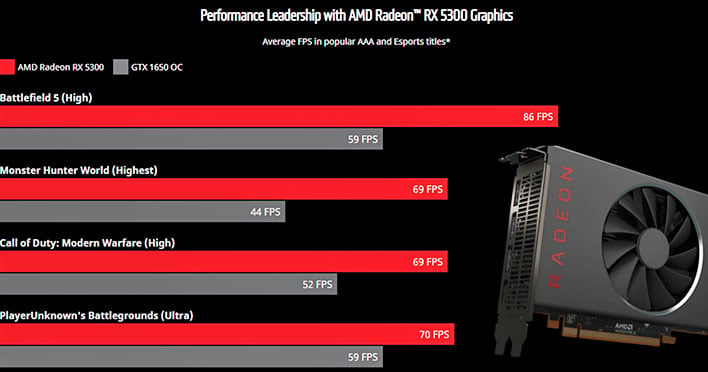AMD Quietly Outs Radeon RX 5300 Navi 14 Cards Ahead Of Critical Big Navi Launch
If that number sounds familiar, it's because a variant of this GPU has been shipping in Apple's 16" MacBook Pro for months now. This, however, marks the first time Navi has stretched down towards bargain bin status as a desktop graphics card. Apple's Radeon Pro 5300m, the desktop RX 5300 and even the desktop Radeon RX 5500 XT all share the same GPU, however—Navi 14. That means this card should be somewhat familiar.

On the desktop, the Radeon RX 5300 has 22 Compute Units which works out to 1,408 stream processors, the exact same number as the desktop Radeon RX 5500 XT5. However, to keep the RX 5300 at its board target power of 100 W, the maximum boost frequency of 1,645 MHz is a sizable step down from the RX 5500 XT's 1,845 MHz. Still, the Radeon RX 5300 is good for 9.26 TFLOPs of compute power and filling 52.6 gigapixels per second thanks to its 32 ROPs. This all results in better-than GeForce GTX 1650 performance, according to AMD's numbers above.
With its 100 Watt board power, we expect that cards based on the Radeon RX 5300 will still have a 6-pin PCI Express connector. While pricing hasn't been announced, we feel that this card will probably slot in at around $130, thanks to the cut in memory bandwidth and capacity. Look for it at retail soon, hopefully.

